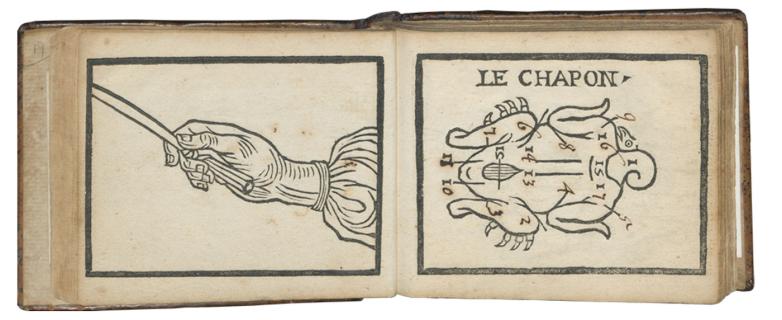Rare Culinary Books go on Display in New York

“Le Chapon,” from De Sectione Mensaria, 17th-century, woodcut illustration.
Opening this Friday at the Bard Graduate Center (BGC) in New York City is an exhibition on historic dining customs and fashions. Staging the Table in Europe 1500-1800 features books, art, and objects (knives out!) that shed light on pan-European food culture.
Some of the rare books on view include Vincenzo Cervio’s Il Trinciante (Rome, 1581, and after); Mattia Giegher’s Li Tre Trattati (Padua, 1629, and after); Georg Philipp Harsdörffer’s Vollständiges Trincir-Buch (Nuremberg, 1642, and after), and other illustrated manuals. The idea is to look at them not so much as sources of information about recipes, but to explore what they can tell us about the material culture of the period and the spectacle of culinary practice, from meat carving to napkin folding, in elite households.
“The historic manuals at the heart of Staging the Table in Europe 1500–1800 contain a wealth of information on otherwise invisible aspects of material and social life. Through intriguing and often beautiful illustrations, they provided the people of Early Modern Europe instruction on expertly carving meats and fruits, folding napkins into animal forms, performing tableside magic tricks, and creating tablescapes for courtly banquets. These volumes were tremendously popular and appeared across Europe, and they are as arresting in our day as they were in their own time. Staging the Table in Europe 1500–1800 reveals the spread of this new culture of the table and enables visitors to connect our present-day interest in food service and presentation to the practices of this period,” said exhibition curator Deborah L. Krohn, associate professor and chair of academic programs at BGC and a leading expert on Early Modern European culinary culture.
The exhibition will remain on view through July 9.















